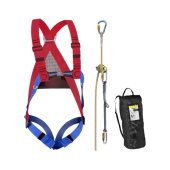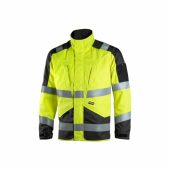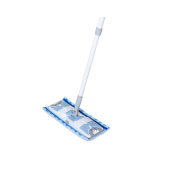Traditional, a procurement manager’s most important expertise was negotiating rates and contract conditions with suppliers.
Many in the procurement industry have adopted technology to improve corporate operations due to the pandemic’s economic upheaval. E-Sourcing has grown popular in procurement due to its cost-saving and operational advantages.
Sales and procurement teams may speed up and simplify the procurement lifecycle using eSourcing. It speeds up and transparently facilitates discussions and tenders.
Many procurement departments are new to this, so we created this detailed guide to streamline the process. We provide a complete eSourcing solution here. We’ll explain eSourcing’s definitions, kinds, benefits, and implementation in procurement.
Explain eSourcing.
Electronic sourcing (eSourcing) involves receiving quotes from many vendors via an online portal. You and your suppliers may communicate easily on this online platform.
ESourcing lets you compare supplier information to choose a preferred provider.
The following fundamental procurement procedures are automated by eSourcing:
1. Request for information
RFIs solicit and analyse a large number of providers in procurement. They usually prioritise supplier capabilities over product, service, and cost. Finding new suppliers with an RFI is helpful.
2. Request for Proposal
RFP invitations are available to all RFI-qualified vendors. Buyers identify what they want and ask providers for fulfilment specifics. RFPs usually want:
A Buyer-Defined Solution, when the company demands a specific product with defined specs.
The buyer wants a solution to a business problem, and the provider must offer one.
RFPs often request company, product, service, and pricing information. RFPs are useful when you know what you want and require providers to explain how they will deliver.
3. Request for Quote
RFQs usually conclude the sourcing process. Procurement teams discuss costs and contract conditions. An RFQ may request bids on service needs, payment arrangements, or quantity discounts but not pricing. RFQs are useful when you’re okay with all providers competing yet want the best offer.
Why Use eSourcing?
E-sourcing helps improve procurement processes. We must first understand eSourcing as a commercial activity. You must comprehend its processes, advantages, and tools.
eSourcing/eProcurement
Although these processes are similar, we want to emphasise their distinctions.
The eSourcing method addresses product or service needs. It also finds, assesses, and chooses suppliers before buying. ESourcing lets you handle documents, quotations, proposals, and contracts for contract lifecycle management and enable bidding, negotiation, and cooperation on a single platform.
However, eProcurement employs online software to automate the procurement process for the procurement staff. Create buy requisitions and orders, then place the order with a reputable vendor using eSourcing results.
How is Sourcing different from eSourcing?
Both procurement teams seek the greatest goods from the finest suppliers at the best price and terms. The key distinction is the techniques utilised for strategic and everyday sourcing.
E-Sourcing is better for procurement in the digital age than conventional sourcing, which hinders internal and external stakeholder engagement. Traditional sourcing restricts supplier connectivity with email, phones, spreadsheets, PDFs, and faxes.
Traditional sourcing technologies impede transparency, standardisation, size, and automation. Fortunately, these characteristics provide the basis for efficient eSourcing.
E-Sourcing components
These elements underpin effective esourcing.
1. Collaboration
Collaboration amongst stakeholders in eSourcing processes include gathering requirements, analysing and rating supplier bids, and choosing the best choice improves understanding of goods, services, and needs.
Supplier collaboration improves engagement and creates innovative, distinctive products and services.
2. Transparency
Traditional sourcing systems limit scheduling, data, analysis, and execution transparency; eSourcing provides full transparency.
Why is this important? Transparency improves procurement results because:
- Improved efficiency
- Collaboration
- Coordinated strategic efforts
- Better spending control
3. Scalability
Manual legacy sourcing methods need inefficient organization-wide administration, analysis, and coordination. Traditional sourcing systems cannot automate the management of massive amounts of complicated sourcing data, which takes time and effort to analyse.
However, ESourcing lets procurement handle several projects at once and providing transparency on project progress and activities. Complex projects are better managed by procurement.
E-auctions and other innovative sourcing technologies allowed teams to negotiate all procurement procedures more faster with eSourcing. Finally, reporting and analysis may be done with a click, decreasing team burden.
4. Standardisation
Procurement buyers seldom receive structure or help during sourcing. Fragmented processes within the organisation can cause operational and supplier confusion, affecting data quality, decisions, and outcomes.
ESourcing offers procurement teams with templated Projects and e-RFx. This streamlines operations and lowers sourcing cycle admin. Standardisation affects data and analysis quality and cooperative activities much more for multinational organisations. This helps in the hybrid-remote workplace and global supply chain markets.
5. Automation
Traditional sourcing technologies need procurement teams to manually gather RFx information and alert and manage vendors. Buyers, stakeholders, and suppliers may get automatic messages and reminders using eSourcing.
Standardised templates help streamline RFx setup and processes, enabling data transfer from repositories, contracts, and requisitions.
Last, automation improves submission reporting and analysis after the RFx process. Automated reports speed up analysis and computations for large numbers of line items, products, commodities, and services.
Workings of eSourcing
Steps in eSourcing:
- Establishing purchase contract specifications
- Creating and sending vendors RFIs, RFPs, or RFQs
- Supplier pre-qualification
- Supplier data collection
- Electronic auctions, if needed
- Competing bids from qualified suppliers
- Analysing and assessing vendors
- Organising online auctions
- Assessing replies
- Negotiations and reference checks with suppliers
- Portal to c
- Contact potential suppliers.
- Picking the winning contract or purchase supplier
- Awarding contracts
- Creating supplier contracts
- Giving successful suppliers contracts or purchase orders
- Reviewing vendor and purchase category automatic expense analysis
- Manage supply chain and supplier relationships
- Evaluation of post-contract vendors
eSourcing Process
Dig deeper into the process.
1. Questionnaires Before Purchase
Pre-purchase surveys assist buyers determine if providers are suitable for business. These extensive documentation analyse supplier appropriateness properly.
2. Request for tender
This includes many providers making competitive bids. The system sends suppliers an invitation once they complete the pre-purchase questionnaire and you decide which ones to invite.
This document covers the organization’s needs, including goods or services, supplier rules, procedures, and processes, and review process management.
3. Request for Quote
Choosing a provider typically comes down to price. Buyers give suppliers paperwork to quote their services at the following round.
4. E-Auction
Suppliers bid on the contract they were requested to tender. The auction encourages vendors to compete and provide procurement specialists the best bargain.
E-Auctions, like RFIs, PQQs, and RFQs, may be executed at any time, which is a major benefit of eSourcing. After this procedure, it is usually tendered or utilised. It can sometimes be a separate event for finished items.
5. Contract Award
The eSourcing procedure ends here. Many parts can be automated to give the successful bidder a contract.
Auction is procurement
Supplier auctions are a big element of eSourcing, thus we need to spend more attention on them.
What’s a procurement auction?
This method involves soliciting bids from various vendors to sell or acquire products or services. Supplier pre-qualification for auctions usually involves:
- All required supply parameters met
- Accepting auction and contract terms, and
- Scope and specs agreement
In a procurement auction, vendors compete on price since everything else is set. Suppliers can compete on non-price criteria in an auction, especially in complicated procurement auctions that examine price, non-price, and linked aspects in real time.
The auction privacy details vary per firm, so competing players may or may not know each other’s names or acts.
Auction Types
We usually conduct forward and reverse procurement auctions.
In forward auctions, bids rise, whereas in reverse auctions, they fall. Most procurement departments utilise online reverse auctions to get the best bargain.
Examine auction kinds in depth.
Reverse Auction
Reverse auctions begins with a shared price for providers. They then compete by decreasing offers. The auction winner is the cheapest provider.
Auction Forward
The beginning price for suppliers is also set in this auction. The pricing is frequently too low for suppliers to sell their products or services. Bidders compete by raising prices. Some call the advance auction a dutch auction.
Japanese Auction
High pricing make it easier for providers to accept here. Bidding providers must accept within a certain timeframe as pricing drops fast. The customer dismisses a bidding supplier who does not accept.
Once just one bidding provider has accepted the price, the auction closes and the final one wins.
How does eSourcing improve Tender Opportunities?
E-auctions assist firms find the finest tender prospects, another benefit of eSourcing.
After holding an auction for what you want, you can give the contract to any provider who bid. You may choose based on service, product quality, etc. E-sourcing platforms let you balance price and quality.
ESourcing benefits
Suppliers and buyers can profit from eSourcing. Shared advantages include:
1. Technological transparency
Technology may increase transparency between parties, among other benefits. Due to itemised rating and analytics tools, eSourcing platforms enable real-time reactions and feedback.
Buyers gain a full view of their vendors and suppliers, while sellers get unprecedented competitive information.
2. Making the process fair for all vendors
Suppliers competing on ESourcing platforms have equivalent buyer information. It ensures fairness so the best provider has a chance. It also gives suppliers the same questions and answers.
ESourcing assures procurement teams receive the same proposal possibilities from multiple vendors and eliminates prejudice. This is good news for a performance-based industry.
3. Builds supplier trust and connections
The traditional manual procurement procedure is:
- The procurement team informs suppliers of the service or items they need.
- Suppliers submit bids
- Procurement negotiates offers from all suppliers.
- Supplier A’s pricing is then presented to supplier B via procurement.
- Suppliers usually pass on customer A’s pricing to B.
This arduous procedure fosters an antagonistic connection between buyers and sellers. Buyers may get their bids at their preferred pricing, but many suppliers feel short-changed.
4. It saves everyone time.
The procurement process is often delayed and consultative before choices. Briefing meetings can consume hours or days out of a tiresome and demanding schedule. Preliminary talks are excluded.
Allowing suppliers and buyers to use identical templates and communicate via a centralised eSourcing system may greatly expedite the procurement process.
Additionally, the finest eSourcing software streamlines vendor and supplier data allowing organisations to make educated buying decisions while saving time.
5. Opens greater business opportunities
Finally, eSourcing software improves consumer efficiency and provider simplicity of use. Once staff know how the suite works, joining bids and expanding your firm is easy.
Overall, eSourcing software levels the playing field and introduces new commercial prospects for all stakeholders.
Extra eSourcing Benefits
The following procurement benefits result from ESourcing:
1. Reduces Risk
Every company process has risk, including procurement. To be compliant, organisations can control their RFPs and audit trails with eSourcing.
2. Improves Vendor Relations
We’ve mentioned this, but we’ll repeat. E-Sourcing may improve vendor relations and efficiency by increasing transparency and openness between buyers and suppliers.
3. Levels the Field
It can help start-ups and smaller enterprises with smaller sales and procurement operations establish product value.
4. Cost Cut
Saving money is crucial in business nowadays. ESourcing works well for it. Supplier bids can be reviewed by procurement teams to efficiently identify vendors.
5. Communicates Centrally
ESourcing improves supplier communication and assessment. Suppliers may obtain precise requirements in one eSourcing platform and interact easily throughout bidding.
Additionally, all information may be instantly accessible whenever needed, minimising protracted email chains and conference calls.
6. Increases Productivity
Productive workers earn more. E-sources allow employees to focus on complicated activities rather than repetitive ones, increasing productivity and happiness.
7. Depletes On-Site Archives
You eliminate needless on-premise storage by going digital. That office or facility can be used for something more useful than storage.
8. ESourcing provides real-time assessment.
Today’s global market requires real-time data evaluation since economic upheavals or lockup announcements may greatly effect procurement procedures.
Thus, eSourcing tools do many analysis depending on the instrument. Most eSourcing software, like Simfoni’s, contains several integrated reports to help you respond faster to initial comments, spot outliers, and locate the best bids by product, service line, business unit, etc.
You can’t ignore post-hoc analysis. Compared to manual bid collation, purification, and comparison, an eSourcing technology will save your procurement team time.
9. Esourcing builds market knowledge.
By gathering and preserving crucial information for reuse in the next sourcing cycle, eSourcing helps your company maintain market consistency.
Starting your sourcing process might speed up supplier selection.
The problems of eSourcing?
As a novel procedure, eSourcing in procurement has some issues. Check them out below.
1. Cost-savings’ diminishing value
Cost reduction has always been the main reason procurement teams adopted eSourcing. However, basing investment decisions on pricing, especially after large savings, might lower supplier service quality.
Despite good price, many firms are dissatisfied with their suppliers.
Despite prior achievements, eSourcing’s capacity to reduce procurement costs remains important. Procurement teams must inform suppliers and management about additional supplier selection variables.
A firm may need to change its focus from year-over-year savings to the annuity value of prior savings.
2. Poor support for ESourcing’s other perks
Due to cost-savings’ eroding value, further eSourcing benefits are not supported. Procurement teams and management must realise that strategic sourcing is more than just getting the lowest bids to maximise eSourcing advantages.
E-Sourcing should cut expenses and produce high-quality, relevant project ideas. Cost and quality must be balanced.
Procurement teams struggle because senior management rarely recognises quality’s importance in the procurement process. Most corporate executives focus too much on profits and cost savings.
This may hurt any endeavour.
3. Lack of goal understanding
Bidding events and RFPs are straightforward with an eSourcing platform. To recruit top vendors and assure quality bids, an effective RFP is needed.
Therefore, procurement teams must comprehend why they require a service. This relates to goals. Imagine the initiative’s team doesn’t know what they want. That would result in unsatisfactory outcomes.
4. Not understanding effective decision-making
The prior point relates to this last factor. Many teams overlook the need of properly reviewing offers to recruit acceptable suppliers. If procurement teams don’t grasp their goals, they won’t generate reliable assessment criteria.
This leads to a business making judgements based on something that may not be relevant or sustainable for a long-term partnership.
Imagine you can see these issues early. If so, you may examine your procurement process and rethink how to optimise your eSourcing platform.
eSourcing Software
ESourcing software helps procurement teams centralise and optimise the entire sourcing process, including supplier onboarding, qualification, data management and analysis, sourcing events management, contract management, and supplier-sourcing team communication.
Modern sourcing software includes all source-to-contract steps, including:
- Pre-qualifying and onboarding suppliers
- RFx/e-auction management
- Managing contracts
- Performance analysis of suppliers
- Savings tracking
.
Software sourcing ROI can reach 900%+ for large enterprises.
There are a few key features to look for in eSourcing software.
Procurement Software Esourcing Features
Great eSourcing software should offer these basics to help you source:
- RFX creation via drag-and-drop
- Making non-price decisions with mapping and export support
- Potential single-sourcing event scalability
- Price flexibility to flip pricing tables from Excel to the module while drafting RFXs.
- Automatic supplier ranking and interactive what-if evaluation
- An in-built platform to identify key suppliers for negotiation and track savings after each round.
- Quick Source creates RFXs on one page for easy sourcing.
- Organization-wide business policy-based automated event approval workflow
Ability to turn sourcing event pricing, non-pricing, and attachments into a contract
Your software should also have procurement tools like:
1. Pre-qualifying and onboarding suppliers
Your eSourcing software should:
- Set supplier requirements based on quality, sustainability, capacity, delivery terms, and internal sourcing policies.
- Have AI-enabled supplier pre-qualification based on pre-set requirements from public data sources like credit rating platforms.
- Custom supplier and sub-supplier onboarding forms
- Automated supplier categorization by user-defined parameters like product or service category, region, strategic priority, etc.
- Supplier approval workflow customisation.
2. Manage RFx
The eSourcing platforms should produce:
- Template-based RFI, RFP, and RFQ forms
- Joint RFx authorship
- Custom multi-department RFx approval workflows
- RFx status tracking for suppliers and sourcing specialists in real time
- RFx submission to selected suppliers planned/unplanned
- Automation of RFx evaluation using user-defined selection criteria like quality, cost, supplier scoring capacity, and selection.
3. Supplier Data Management
In this volatile global supply chain market, real-time supplier data management is essential. Your software must:
- General supplier company information, current capacity, supplier interaction history, ongoing activities, and pricing should be centralised.
- Store contracts, accreditations, supplier compliance certifications, and business requirements centrally.
- Provide a search engine with filtering and metadata querying for supplier data and documents.
4. E-Auction Management
Auctions are crucial to procurement, so your software should:
- Making a rule-based e-auction system
- Editable auction page templates
- Support forward, reverse, Japanese, Dutch, and other e-auctions.
- Invite suppliers to e-auctions using templates.
- Parallelize e-auctions across lots.
- Centralise supplier bids in real time with an interactive display.
- Provide a rule-based e-auction extension for last-minute bids.
- Provide AI-enabled cost-benefit analysis and bid compliance grading for supplier bid comparison.
- Customise supplier award rules to meet sourcing criteria like multi-sourced mission-critical products.
5. Contract Management
Contract management mistakes might hurt your bottom line. Automated contract administration is essential. Look for contract management software with these features:
- Internal stakeholders and suppliers can collaborate on contract review and editing.
- Configurable contract approval procedures for internal stakeholders and suppliers
- Live contract status tracking (authorised, signed, etc.)
- Scheduled supplier contract start, expiry, and renewal alerts to sourcing team
- Contract versioning automation.
6. Plan and analyse spending
Automation and technology may provide companies a competitive edge in spend management. Thus, your app should have these features:
- Period-, category-, supplier-, department-, and business entity-specific spend planning. Planning should also use past spend and internal and customer demand data.
- Calculating and tracking expenditure live
- Rule-based product and service categorizations for expenditure optimisation.
We automate, streamline, and simplify procurement using groundbreaking technology, AI-enabled content, and deep knowledge. A composable, on-demand expenditure management software that simplifies procurement.
7. Monitor Supplier Performance
Finding software that can provide real-time supplier data is vital.
- Create dashboards showing real-time supplier activity.
- Compare supplier performance to pre-defined KPIs like on-time purchase order delivery, average purchase order execution delay, backorders, etc.
- Perform AI-powered reputational, financial, operational, and other supplier risk assessments using internal and public data.
- Score suppliers on performance and engagement.
8. Savings Management
Organisations must prioritise cost savings and invest in a procurement savings tracker. Savings management software should show real-time savings. Additionally, it should:
- Use sourcing events, product/service categories, suppliers, etc. to set user-defined savings objectives.
- Automatically calculate savings from RFx and e-auction data.
- Track pre-set savings objectives.
- Customise savings report templates.
- Include savings forecasts by time, category, SKU, region, etc.
9. Supplier Portal
Your software should feature a vendor portal, which helps sourcing teams and suppliers:
Team sourcing features:
- Faster supplier and sub-supplier communication via instant messaging
- Templated and customised supplier surveys
- Individual or mass mailing of supplier surveys for useful supplier feedback on collaboration
Supplier features:
- Supplier self-registration which involves monitoring and updating necessary corporate information
- Supplier profiles with information on RFxs, e-auctions, contract reviews, etc.
- RFx alerts, e-auction invitations, expiring data updates, etc. sent to suppliers in real time.
- Supplier forum with interactive Q&A and R&D insights, demand forecasts, etc.
Common Questions
Explain eSourcing.
It includes computerised supplier identification, negotiation, bidding, and contract administration.
An example of eSourcing?
ESourcing involves an organisation inviting suppliers to submit electronic bids for a project or procurement demand online. The software lets suppliers read procurement needs, make proposals online, and negotiate in real time without physical paperwork or meetings.
What is e-procurement eSourcing?
E-procurement relies on eSourcing to handle the sourcing process electronically. Digital tools and platforms are used to efficiently discover suppliers, seek quotations or proposals, analyse supplier answers, and negotiate terms to optimise procurement outcomes.
What distinguishes e-purchasing from eSourcing?
e-Purchasing and eSourcing are related but separate e-procurement concepts.
Online catalogues, purchase orders, and electronic payments are common in e-Purchasing.
However, eSourcing focuses on electronic sourcing and procurement, including supplier discovery, negotiation, and bidding.
While e-purchasing addresses transactional procurement, eSourcing handles strategic sourcing and supplier relationship management.
Workings of eSourcing
These are common eSourcing steps:
Supplier Identification: Companies find vendors for procurement needs.
E-Sourcing systems allow organisations to seek supplier information about their capabilities, goods, and services.
Suppliers get detailed procurement requirements electronically. Suppliers offer quotations.
E-Sourcing software helps organisations analyse supplier answers using established criteria.
Organisations can negotiate terms and conditions in real time online.
Contract Management: Electronically generate, sign, and maintain contracts after an agreement.
After procurement, organisations utilise eSourcing solutions to maintain supplier relationships and performance.
Benefits of eSourcing?
Benefits of eSourcing:
Efficiency: Streamlined procurement processes save time.
Cost savings: Competitive bidding and negotiation can reduce costs.
Any procurement data is available and transparent.
Supplier Collaboration: Better communication and collaboration.
Data Analytics: Supplier performance and pricing trends-driven decision-making.
Compliance: Improved procurement regulations compliance.
Why use eSourcing?
E-Sourcing primarily improves procurement efficiency. Allows organisations to:
Find and contact vendors.
Receive and assess supplier bids.
Improve terms and price with real-time discussions.
Aid contract creation and management.
Keep track of supplier compliance.
Save money and be transparent in procurement.
What are eSourcing tools?
eSourcing technologies streamline and simplify sourcing and procurement. Tools usually include:
Supplier Database: Stores possible suppliers.
Templates standardise RFI/RFP/RFQ requests.
Aids bid evaluation of supplier answers.
Live online negotiations on negotiation platforms.
Helps generate, store, and administer contracts.
Analytics empowers decision-making using data.
Monitors supplier performance and compliance.
These tools simplify eSourcing and improve procurement.
How might eSourcing improve procurement sustainability?
eSourcing helps procurement sustainability by:
Supplier Evaluation: Organisations may evaluate and choose sustainable suppliers.
E-sourcing platforms reveal supplier environmental and social responsibility activities.
Cost reduction: eSourcing optimises supplier selection and negotiation to find cost-effective, sustainable choices.
Data analytics tracks and measures supply chain environmental effect.
Which industries gain most from eSourcing?
Industries with complicated supply chains, huge procurement volumes, and competitive pricing benefit most from eSourcing. Due to its efficiency and cost savings, eSourcing benefits manufacturing, healthcare, retail, and construction.
Does eSourcing pose security risks?
Yes, eSourcing security issues exist when managing sensitive procurement and supplier data. Organisations should address these issues:
Install strong data security.
Encrypt data and restrict access.
Audit and analyse security regularly.
Use trustworthy eSourcing systems with good security.
How can SMEs use eSourcing?
SMEs can use eSourcing:
Expand your supply base.
Compete equally with larger companies.
Reduce administrative expenses and streamline procurement.
Ask suppliers for good deals.
Increase procurement openness and data-driven decision-making.
How does eSourcing affect strategic procurement?
Critical to strategic procurement is eSourcing, which lets companies:
Find and work with strategic suppliers.
Optimise terms by competitive bidding and negotiation.
Ensure purchase decisions support company goals.
Better manage and collaborate with suppliers.
Help procurement make data-driven strategic decisions.
How has eSourcing adoption changed?
Organisations have used eSourcing more and more as they realise its benefits. It started with internet purchase basics. Today, it includes enhanced supplier, negotiation, and contract management tools and platforms driven by efficiency, cost savings, and data-driven insights.
What are the finest eSourcing implementation practices?
An effective eSourcing system involves:
Set clear eSourcing targets.
Engage important stakeholders including procurement teams and suppliers.
Strong Training: Train eSourcing tool users thoroughly.
Data Management: Clean data for successful eSourcing.
Develop an eSourcing culture of continuous development.
Check eSourcing for legal and regulatory compliance.
Organisations may maximise eSourcing benefits by following these best practices.













